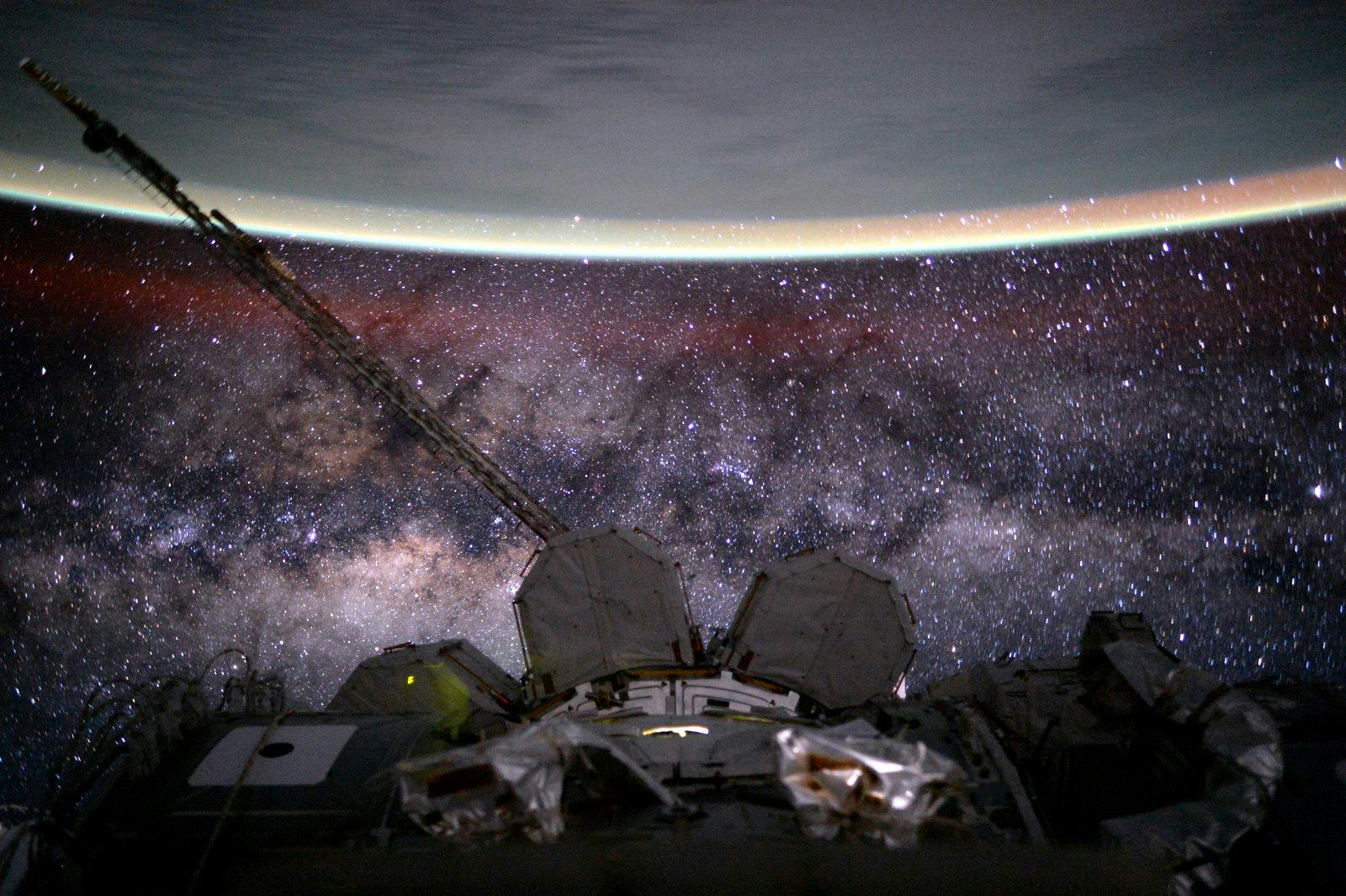
Someday in the future, the first astronauts to explore the north and south poles of Mars may trek across the dusty ice by the eerie green light of oxygen atoms high in the Martian atmosphere.
The European Space Agency’s ExoMars Trace Gas Orbiter recently spotted the atmosphere around Mars’s southern pole glowing an eerie green during the long polar night. The green glow is thanks to oxygen atoms recombining high above the Martian surface, releasing energy in the process. University of Liege planetary scientist Jean-Claude Gerard and his colleagues published their findings in the journal Nature Astronomy.

Lighting Up Mars’ Polar Nights
ExoMars recently spotted the vivid green glow in the sky over Mars’ southern pole, where it’s now late winter. The nightglow, also called airglow, looks a little like an aurora, but it’s something else entirely.
Aurorae happen when charged particles from solar wind — or a solar storm — hit Earth’s magnetic field. The lines of our magnetic field can funnel those charged particles into the upper atmosphere, where they interact with the gas that’s already there (nothing sets off a bunch of chemical reactions quite like throwing a handful of ions into the mix). The result is a colorful light show in the night sky over the far northern or southern regions of our planet. Oxygen contributes green and red light, while nitrogen provides blue and purple.
Mars has its own aurorae; every planet in our solar system has them, and every planet in the universe with a magnetic field and an atmosphere probably does, too. Even Mercury has weird x-ray aurorae. But there’s more than one way to light up a planet’s night, and the newly discovered airglow is caused by an entirely different process (although it also comes down to the Sun and oxygen).
On the summer half of Mars (which is the northern hemisphere at the moment), summer sunlight pours energy into carbon dioxide molecules high in the Martian atmosphere. The extra energy causes the carbon and oxygen atoms that form the molecule to break apart, leaving loose bits of carbon and oxygen floating around high above the surface.
Eventually, the prevailing winds carry those loose atoms to the winter side of the planet; there, in the quiet darkness of the winter night, the atoms settle down enough to form chemical bonds again. Single oxygen atoms combine into molecules of O2, and in the process, they release energy in the form of green light.
The nightglow may even be bright enough for future Mars polar explorers to see on clear nights, according to Jean-Claude Gerard and his colleagues in their recent paper.
Nightglow happens on Earth, too, but it’s not usually bright enough to see from the ground. The best way to view Earth’s nightglow is edge-on: it helps if you can fly to the International Space Station and then take a snapshot just peeking over Earth’s horizon.







